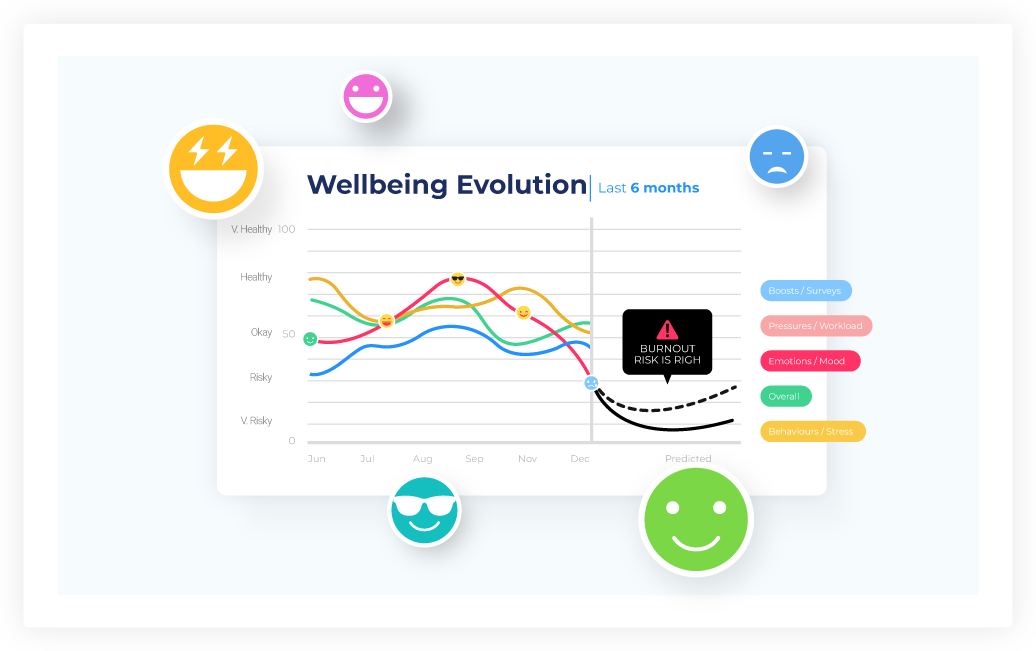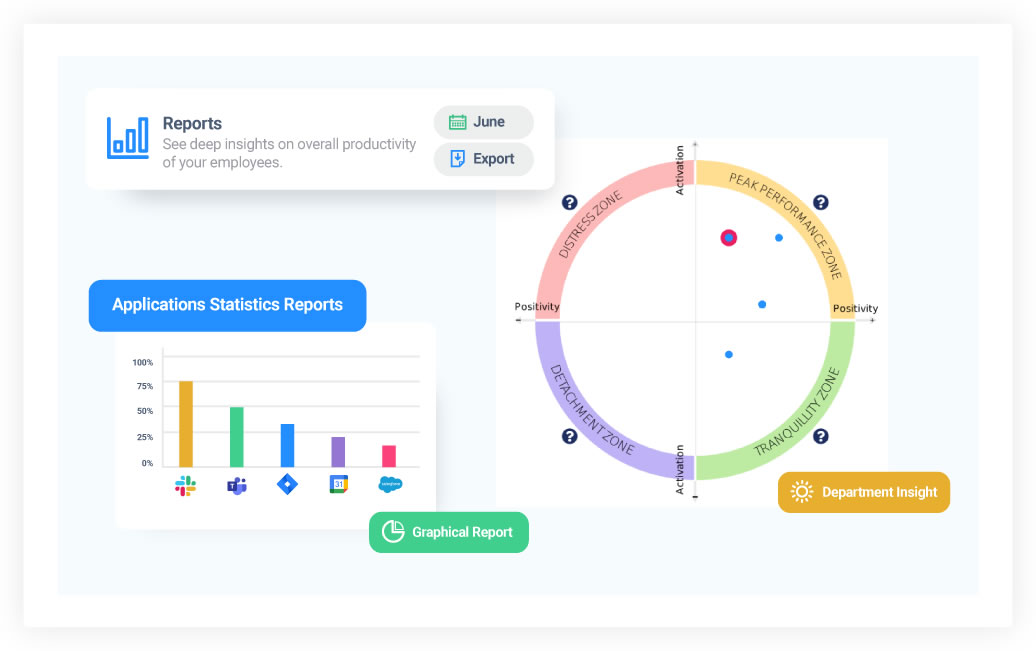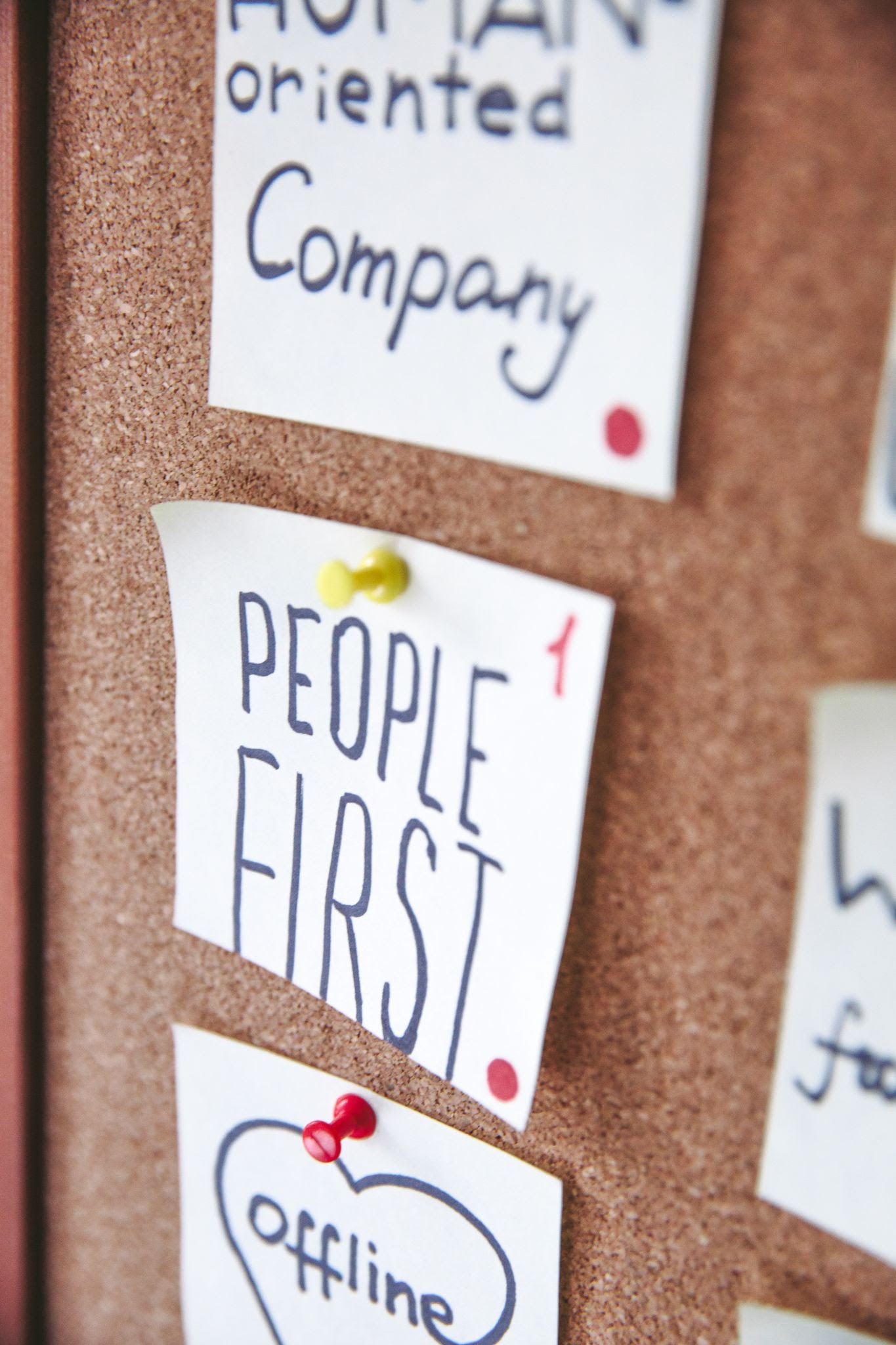Archives: Learn Docs
Learn Docs for Leanmote
Figma
Confluence
Miro
Measuring Stress, Managing Burnout
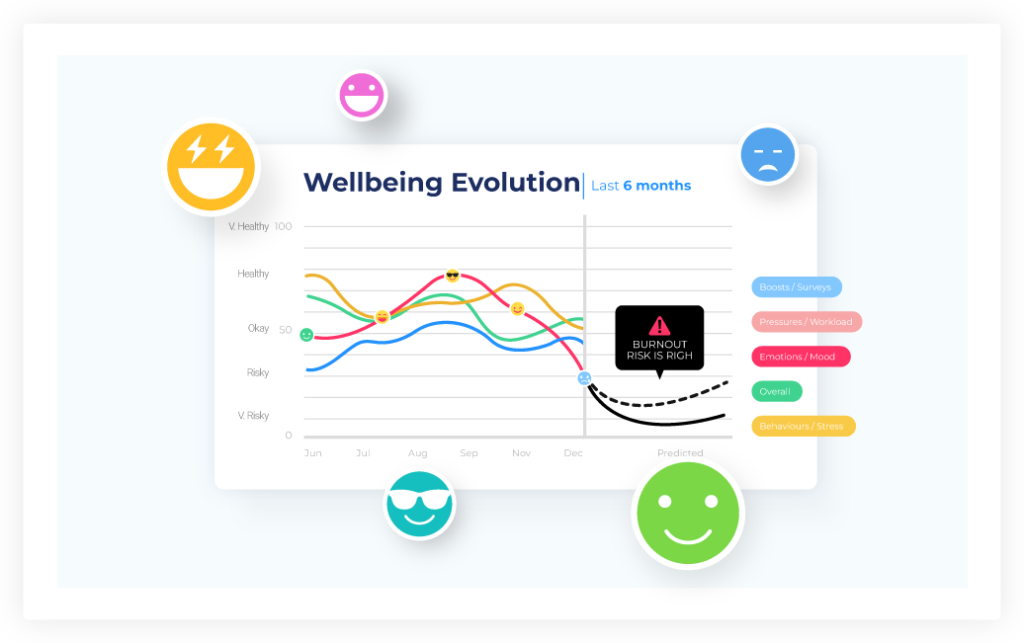
What is “stress”?
Stress is best understood as the psychological state triggered when we experience events, situations, or demands that are personally important, but where outcomes are uncertain. They tend to co-occur with a range of other states including emotions (e.g., anxiety, fear, anger, or frustration) and thoughts (e.g., worry or rumination).
Different people can experience stress in different ways. Some people experience intense anxiety when they are stressed. Some get easily frustrated and angry. Others find they are ruminating about their work problems over the weekends, or in the middle of the night.
Many psychologists see stress as a multi-step process, sometimes called the stress response. When a person is exposed to a new situation, this triggers a fast response known as a stress appraisal. If the situation seems to have high stakes (e.g., risk of personal harm/loss, or a chance for personal gain), the stress-centre of their brain (the amygdala) is activated, causing a release of stress hormones (cortisol and adrenaline) into the bloodstream.
The nature of the initial stress appraisal, in conjunction with a variety of other factors (e.g., one’s previous physiological and psychological state, recent stress appraisals, subsequent stress appraisals, or coping behaviours), determines how much of each hormone is released, and how quickly they are reabsorbed.
How is “stress” different from burnout?
Burnout is a term given to a syndrome that consists of three conditions: exhaustion (persistent physical, cognitive, and/or emotional fatigue), detachment (feeling isolated and cynical), and inefficacy (feeling like one is accomplishing little that is worthwhile). These conditions can each be experienced independently of one another; burnout occurs when the three conditions occur at the same time.
This syndrome typically emerges in people who have been experiencing high levels of stress response for a long time. Burnout could therefore be considered a consequence of chronic stress, and is associated with declining work performance, work engagement and job satisfaction, increased withdrawal behaviours (including absenteeism), and increased risk of physical and mental illness. People at this stage typically take a very long time to recover their pre-burnout levels of wellbeing and capability, if indeed they ever do.
How does measuring stress help?
Stress can be measured in a variety of ways, which give rise to different benefits. Having even a basic understanding of your own stress levels gives you better insight into your psychological and emotional health, as well as gauging your individual wellbeing.
Stress and wellbeing are very strongly related, with experiences of stress decreasing an individual’s wellbeing. By measuring and understanding the stress that people experience in their daily lives, they are able to gain a better understanding of their wellbeing as a consequence of their stress. This insight can then be used to assist in developing ways for an individual to minimise stress and maximise wellbeing.
As burnout is found to occur when an individual has been experiencing high levels of stress over time, tracking stress can indicate when an individual is at risk of experiencing burnout. People can know when they are likely to experience burnout by tracking their stress levels over a period of time, which then allows interventions to be taken to minimise or avoid the outcome altogether.
How to reduce burnout and increase work engagement?
Otto et al., 2020, uncovered many factors that reduced burnout and increased work engagement in employees, including:
Increasing and maintaining supervisor social support
Social support from supervisors within the workplace is fundamental to fostering wellbeing and reducing burnout. Employees who feel supported by their supervisor and their workplace are more likely to have better performance, be better able to deal with stress, and experience a sense of purpose in their work.
By increasing the social support, a supervisor provides an employee, the likelihood of burnout occurring is minimised, as it is likely that less stress is experienced.
However, social support provided by a supervisor must be carefully considered, as too little can leave the employee with no feeling of support -which can lead to burnout-, but too much support from may leave the employee with no feeling of autonomy and very little responsibility, minimising their personal sense of capability in the workplace.
Supervisors should make sure they are offering an appropriate amount of social support to their employees, avoiding too much or too little support for each individual based on their specific needs, tasks, and responsibilities.
Increasing and maintaining co-worker social support
Co-workers are also an important source of social support within the workplace, providing a buffer between the emotional exhaustion and depersonalisation elements of burnout. This gives additional resources for employees to better deal with stress and job demands. By providing more resources to mitigate stress in their position, the employee is less likely to experience burnout.
Seeking and performing tasks that energise
Feeling dissatisfied with one’s work or experiencing high levels of stress, or even burnout, can all be interpreted as a sign that the individual in question should refocus their efforts towards tasks that are more stimulating and energising.
Increasing and maintaining home autonomy
Providing employees with a degree of autonomy in their work allows them to have greater motivation towards their job and reduces stress built from feelings of micromanagement.
Specifically, employers can focus on:
Flexibility: Enable employees to choose how they work. This may include providing them with the freedom to create their own workspaces or allowing them to make their own work schedules. This helps to build trust in workplace relations and create a sense of dependability within employees.
Fostering a culture of accountability: It is important to establish a culture where employees feel comfortable in taking accountability. Employers must strive to create an environment where employees are encouraged to improve and learn from their mistakes.
Granting employee ownership: Recognise and encourage the abilities and skills employees possess. For instance, if you know that an employee has specific expertise in an area that would be valued for an upcoming task, encourage them to manifest that skill and lead others with their knowledge.
Being open to employee suggestions/opinions: This can help to develop new insights, challenge preconceived opinions, and unlock new modes of performance.
Reducing conflicts, both at work and at home
Personal conflicts and clashes, as well as a stressful environment, both at work and at home, tend to have a negative effect on the overall wellbeing of a person.
Improving and maintaining physical health
Exercising and engaging in other physical activities release endorphins. Endorphins are neurotransmitters that increase feelings of pleasure, ability to sleep and reduce pain.
Good sleeping patterns are also known to help employees feel better the next day, including having a higher work engagement and job satisfaction. On the other hand, individuals who have had less hours of sleep are shown to feel disengaged from work, stressed, and more likely to burnout.
Engaging in relaxing activities
Individuals with high stress levels exhibit faster heart rates, high blood pressure, and high breathing rates. Engaging in relaxing activities such as deep breathing exercises, progressive muscle relaxation exercises, mindfulness meditation, and more, has been proven to help bring down these symptoms.
By bringing focus and attention to the breath and the self, rather than to negative moods and thoughts, employees are better able to reduce their stress and approach work with a healthier mindset.
Appropriate disengagement from work outside of work hours, also allows for reduced negative emotions towards an individual’s job.
Disengagement is the act of mentally disconnecting yourself from something and keeping it away from your thoughts. If someone is unable to stop thinking about work outside of work hours, then they are more likely to be constantly worried and stressed, leaving them unable to recover.
Instead, by encouraging employers to appropriately disengage themselves from their work stressors when they are outside of their work hours, they will be better able to recover from the issues they encounter at work, thus improving their mental and emotional health.
By providing the means to prevent burnout, minimising stress and strengthening employees’ methods for dealing with stressors in the workplace, the likelihood of burnout occurring decreases drastically.
With resources such as Leanmote, employees and companies alike are encouraged to take actionable steps towards reducing stress and preventing burnout.
This is done by continuous, in-depth monitoring of employees’ emotional and mental health, to gain insight into their wellbeing and stress levels, and by providing suggestions to employees and managers on what to do if individuals are headed towards burnout.
Measuring different types of stress
Individuals experience stress in different ways, which is why sometimes it becomes difficult to determine when someone is suffering from it.
Some people may experience stress in a more physical manner, through aches and pains, feelings of tiredness, or even hair and weight loss. Others may instead find that they are affected mentally or emotionally, becoming more anxious or getting less enjoyment or reward out of their daily activities.
All this makes it increasingly hard for organizations to monitor and manage their employees’ wellbeing by themselves. Additionally, a general lack of awareness on these topics makes it harder for people to pick up on the signs of their stress levels and personally understand their wellbeing to a greater extent, which is one of the fundamental premises of stress and burnout management.
How can Leanmote help?
Leanmote can help prevent burnout episodes by providing employees with the opportunity to conduct self-mood assessments and track their overall health. By letting employees take control of their wellbeing they will be able to acknowledge their negative actions and moods (such as stress, anxiety, fatigue, and exhaustion), and engage in actions to mitigate these effects.
It also enables employers to observe trends in their employees’ wellbeing and, in turn, take an active role in formulating strategies to help make their work more manageable. Ultimately, not only does tracking wellbeing allow employees to stay attuned to their behaviours and moods, but it also enables them to engage more with their work and boost job-satisfaction and productivity.
Actionable data for real stress and burnout management
The global workforce’s long struggle with a continuous decline in productivity levels displays a strong correlation with the slow but steady increase in stress levels amid the working population. That high levels of stress are causing a drop in productivity is no surprise -this much has been acknowledged-, but efforts to curb this trend have so far been scattered and ineffective.
As much talk as there is nowadays about wellbeing and stress management in the workplace, no one seems to know exactly what stress and burnout are or how to manage and prevent them, and company’s which are spending millions of dollars in health and wellbeing trends have little to show for it.
Leanmote’s disruptive approach towards these topics lies in its efforts to make stress and burnout tangible through measuring and analysing hard data, and to propose actions that have been proven to show clear results in preventing burnout and improving employees’ overall health and wellbeing.
Leanmote’s platform provides companies with models that have the potential to transform wellbeing in the workplace and help them make sense of this black box that is stress and burnout, so that they can focus on results and simply reap the benefits of a team that is healthier, more productive, and more engaged in their work.
How a Heart Attack Changed Jonathan Frostick’s Life and Turned His Attention Towards Wellbeing in the Workplace

Prior to April 2021, Jonathan Frostick’s life was a normal one -which, in hindsight, might be a somewhat alarming statement-, in the sense that he put up with enormous amounts of work-related stress every day, and told no one about it.
The term “normal,” here, is key as, according to a 2021 report by Gallup, around 57% of workers from the US and Canada reported feeling stress daily, a figure that rose 8% from the previous year.
In April 2021, however, a burnout episode turned into a heart attack that almost ended Jonathan’s life (if this sounds excessive, bear in mind that, according to the American Institute of Stress, 120,000 people die as a direct result of work-related stress every year).
Happily for Jonathan, though, his visit to the emergency room didn’t bring his life to an untimely end, but it did bring about a series of changes, both in outlook and in the way he approaches his work.
In a LinkedIn post that has since gone viral, and been featured in publications such as the Financial Times, he made a list of resolutions that included not spending all day on zoom anymore, losing weight, and spending more time with his family. In addition, he now works as a Strategic Advisor for Leanmote, where he seeks to explore how tracking stress metrics and statistics can help other people avoid what he went through.
What happens during a burnout episode and how does it impact employees’ output and wellbeing?
The WHO defines burnout as “a syndrome conceptualized as resulting from chronic workplace stress that has not been successfully managed,” and it’s characterized by the co-occurrence of three conditions:
- Exhaustion – persistent physical, cognitive, and/or emotional fatigue
- Detachment – feelings of isolation and cynicism
- Inefficacy – feeling that one is accomplishing little that is of value
Burnout is associated with a decline in employee performance, levels of engagement, and job satisfaction. Moreover, there’s a significant correlation between chronic work-related stress and an increase in physical and mental illness.
At the same time, people that have suffered burnouts typically experience long periods of recovery before they can go back to their habitual levels of productivity and wellbeing, and many of them might never go back to their pre-burnout levels.
How much time does it take to recover from burnout?
If we take a look at the scientific literature surrounding the subject, it’s estimated that employees can report sensations of burnout after one year with a natural recovery, although that number can go up to even ten years with some individuals (Cherniss, 1990) -and it’s important to note that most burnout cases don’t actually end up in a heart attack, which is obviously a much more detrimental situation.
As you can see, there’s no fixed period of recovery, as there are multiple variables that go into it, once the storm has passed -such as, what changes you bring forward after the event, both at work and in life in general, your overall physical condition, the support you receive from the people that surrounds you, and even your access to modern medical equipment and institutions, as well as a whole array of uniquely personal physiological characteristics that go into the mix.
For Jonathan, it’s now been almost eight months after his heart attack and he’s been through two medical interventions, but he still feels he’s at the beginning of his recovery, even though his body is responding well to the treatment. As he mentions in a video published on his LinkedIn account, there are two sides to his recovery, one’s physical and the other’s mental and the latter can be the real challenge.
Preventing burnout through the use of technology and analytics
When considering cases like Jonathan’s, we mustn’t forget that the real tragedy about these kinds of situations is that they’re completely avoidable. Stress is brought about by a series of triggers -or stressors- which employees, as well as senior staff and leaders, can -and should- be on the lookout for.
What’s more, stress can be measured through a set of metrics, and brought down (each time there’s a risk of burnout) by a series of methods, such as increasing social support within the company, reducing conflict, improving physical health, engaging in relaxing activities, and taking a day off.
Now, organizations can have a hard time measuring and following up on their employees’ wellbeing, and this is where companies like Leanmote come in. Leanmote tracks employee wellbeing and stress statistics and provides analytics and insights that help both employees and their leaders know when it’s time to do something to prevent burnout.
Becoming a better leader
Good leadership doesn’t come easy in organizations. Oftentimes, Managers lack the visibility to know exactly what’s going on with each member of their team, and this can lead to critical issues such as low job satisfaction and engagement, drops in productivity, and, of course, stress and burnout.
According to a recent study, one of the main factors that drive the prevention of employee burnout at work is “increasing/maintaining supervisor social support” (Otto et al., 2020). This gives us a glimpse into how important it is that Managers act at the right time and in the right way.
And, with Leanmote’s platform, they can perform better in their positions as leaders, by gaining powerful insights into the overall wellbeing and engagement trends of their teams and receiving expert advice on how to best manage a situation surrounding high levels of stress or job dissatisfaction in employees.
Wellbeing Analytics and Burnout Prevention
Even though Jonathan wasn’t monitoring his stress levels or overall health data prior to his heart attack, once he thought about it, he could easily notice how the pattern began to emerge.
He did, however, begin to check on these metrics after the event of April 2021, and the results were clear. With real-time insights into his health trends, he could see when it was time to push back and work on himself and, in this way, avoid a potential problem with his recovery. In other words, he was able to take back control over his life and work.
Now, he’s trying to organize his new life, while he works actively to help businesses take care of their employees, and employees take care of themselves, by collaborating with health and wellbeing startups like Leanmote as an Advisor. And only eight months after his heart attack, he’s been featured in a Financial Times podcast, in which he reflects on his experience as a life-changing event.
As he states in the video we mentioned earlier, “…the way that we work now (in a post-pandemic world) provides lots of opportunities for organizations to understand how they can better manage hybrid/remote teams.” And with a bit of luck, his experience and subsequent efforts can help drive that change in the following years.
Let your employees gain control over their lives today
Allow your organization to foster employee wellbeing through real-time analytics and evidence-based models. Sign up for a free trial, now!
About Leanmote
Leanmote lets modern, agile workforces improve wellbeing and performance through real-time data tracking and evidence-based tools.
Reference:
Gallup’s State of the Global Workplace 2021 Report
International Classification of Diseases (ICD-11), World Health Organization
Natural Recovery From Burnout: Results From A 10-Year Follow-Up Study; Cary Cherniss; 1990
The Development of a Proactive Burnout Prevention Inventory: How Employees Can Contribute to Reduce Burnout Risks; Madelon C. B. Otto, Joris Van Ruysseveldt, Nicole Hoefsmit y Karen Van Dam; 2020.
Measuring Experiences of Work
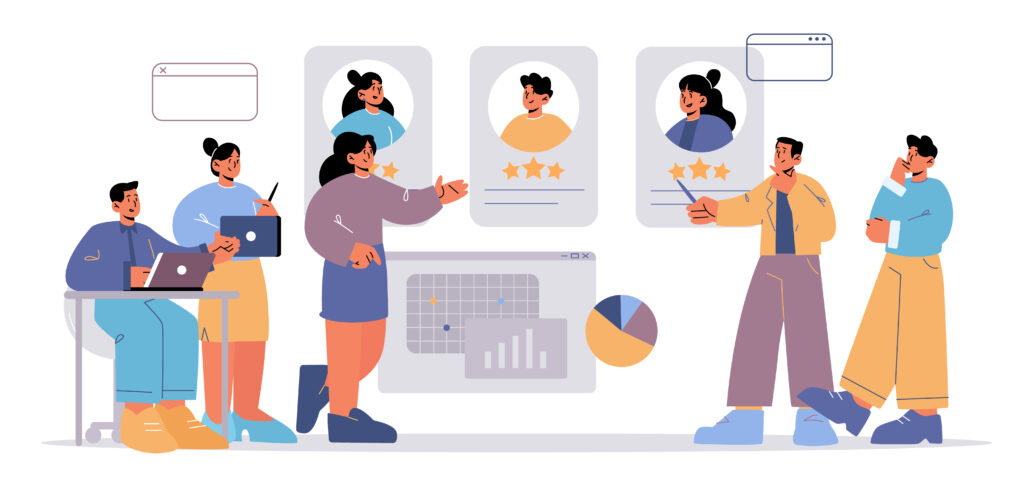
What is a “good” job?
Work plays a huge role in our lives. Yes, it provides us with money, but work should also meet other needs! A good job provides a sense of purpose, of being useful, of helping to achieve something worthwhile. Good jobs challenge us so that we keep learning and growing. And to help us meet those challenges without becoming overwhelmed, a good job should provide appropriate resources.
Of course, the world of work is more complex than just “good” jobs and “bad” jobs. In many jobs, different projects or tasks might be experienced very differently from one another. This can make it trickier to identify and improve aspects of work that may be undermining what might otherwise be generally positive work experiences.
Leanmote measures some key indicators of how people experience their work, and does so in a way that can be linked to specific projects or tasks. Our feedback can therefore help pinpoint which aspects of work are doing well, and which ones could use some attention. Our focal areas are motivation, capability, resources, and overload.
Motivation
What do we measure?
Motivation describes the phenomena behind what we prefer to spend our time doing, how much effort we put into doing it, and how much we persist in the face of obstacles1.
For most work roles, performance quality is more important than quantity. This means that an employee’s desire to excel is an important indicator of motivation to perform. Such desire is uncommon for tasks that seem pointless or arbitrary. People care more about the results of work that seems to support a worthwhile goal. This is why another critical indicator of motivation is an employee’s sense of meaningfulness in their work2.
Although they are complementary, something common to these aspects of motivation is that they are more about an employee’s internal drives (e.g., needs, priorities, goals), also known as autonomous motivations, than they are about external factors (e.g., bonuses).
Why measure this?
The forms of motivation that we measure are highly relevant for work performance. All else being equal, a person who is more motivated will usually outperform someone who lacks motivation1,2. People tend to feel their most motivated about things that connect to their internal drives (e.g., needs, priorities, and goals)3. These internalised forms of motivation appear to be particularly important for performing well at complex tasks4.
However, these internalised motivations are also important for employee wellbeing. Employees who experience more internalised motivation tend to report more satisfaction, more engagement, and better wellbeing than those lacking such motivation4. By providing conditions that fuel such motivations, employers are more likely to create environments in which employee wellbeing flourishes.
By tracking motivation, people can develop insight into the types of tasks that connect best with internal drives. Managers can learn how to better match assignments to team members on the basis of motivations, and to provide feedback that supports motivational needs. Clients of LeanMote have access to guides for using feedback to address unfavourable results.
Capability
What do we measure?
Your people are likely in their current roles because they have valuable skills. But to make the most of your people, and to help them get the most out of their opportunities, you need to think about how their skills are utilised and developed.
We feel more capable, and our work seems more meaningful when we have more opportunities to use those skills we invested time and effort developing to a high level2. Similarly, when our work makes use of our personal strengths and qualities that we like about ourselves, we tend to feel more confident and optimistic5. By contrast, when we’re performing simple tasks that anyone could perform, we feel less useful and less unique. And people can feel threatened when performing tasks that accentuate their weaker areas.
But if we rest on our laurels, doing the same things again and again, then we eventually lose enthusiasm, even if our tasks are a great match to our skills. This is why it’s also important to develop and challenge people. When handled correctly, opportunities to learn and achieve more are experienced as positive challenges that facilitate engagement, problem-solving, and healthier responses to stress6.
Why measure capability?
It’s good practice to put your employees’ strengths to good use. Several theories of work psychology emphasise the importance of achieving a good fit between task requirements and employee character strengths5 or capabilities7. Studies show that employees tend to have more positive attitudes when they have more opportunities to apply more of their strengths, utilise more of their skills, or develop their skills5,6,8. Put simply, employees are happier and more motivated when they get to do more of whatever they are good at, or when they can further extend their capabilities!
By tracking capability over time, it will be easier to identify where capabilities are well matched to tasks, and to plan development opportunities that support ongoing fit. Managers can learn how to better match assignments to team members on the basis of capability, and may be able to allocate resources to support those for whom the match is less suitable. When handled well, stretch goals, complex tasks, unfamiliar situations, and higher levels of responsibility, in addition to more conventional learning opportunities, can all work to enhance capability, ultimately contributing to a sense of growth and mastery. Clients of LeanMote have access to more detailed guides for matching challenges to employees.
Resources
What do we measure?
No-one is an island. Good work requires motivation and capability, but it’s hard to excel when you lack the necessary resources. In this context, the term “resources” applies to a wide variety of things that people can use to improve their performance and to better handle the day-to-day demands of work. Resources can be such things as reliable technology, efficient processes, accurate information, clear goals, and more9.
The two complementary resources we focus on are autonomy and co-worker support. When people have autonomy, the freedom to decide how they can best achieve goals, they can better manage their other resources and they feel more ownership of any achievements they produce9. When people can rely on their leader and peers for assistance, advice, and emotional support, they can draw on more knowledge and experience and they are less likely to become overwhelmed9.
Why measure resources?
Higher levels of work resources, particularly autonomy and co-worker support, are consistently associated with higher levels of job satisfaction and employee engagement9. People with better work resources also tend to report lower stress and burnout9.
In some jobs, resources will vary from task to task. In some contexts, people may come to expect poor resources and may not think to ask for them. By tracking resources, managers can identify resource needs and offer to provide them without waiting until work falls behind schedule. Clients of LeanMote have access to more detailed guides for using feedback to address resource limitations.
Overload
What do we measure?
Overload occurs where someone finds themself expected to do more than can be accomplished in the available time frame. This can be a consequence of poor time management, but overload can arise for many other reasons, including but not limited to misjudgements of task complexity, impacts from unforeseen events, or a simple lack of personnel.
Overload can also be triggered or exacerbated by hindrances, things that interfere with efficient achievement of our work goals. Some examples include upstream process delays, flawed systems, bureaucratic hurdles, ambiguous requirements, conflicting priorities, and tensions between staff members.
Why measure overload?
Work overload is one of the best predictors of employee stress and burnout9,10. Hindrances, such as ambiguity and conflicting priorities, also consistently predict stress and burnout10,11. Hindrances can also harm work performance at least as much as overload (if not more12). So it’s in an organisation’s best interest to avoid these!
However, it’s often difficult to identify overload. For employees, admitting to being overloaded can be confronting in an environment where everyone seems to be managing heavy loads; it can feel like admitting that you lack capability. Yet employees can become overloaded despite being highly capable and motivated. For a manager, it can be hard to anticipate just how much a given task will impact an individual’s workload, particularly when employees are working across multiple tasks and projects.
By tracking experiences of overload, employees can develop insight into the types of tasks that they are most likely to find overwhelming. Managers can use this information to better allocate resources, since high levels of resources help to prevent overload or mitigate its effects8. Here in particular, early responses to increasing overload are likely to make a big difference. However, as even a well-resourced employee can become overloaded, clients of LeanMote have access to more detailed guides for using feedback to address unfavourable results.
References
- Vinacke, E. (1962). Motivation as a complex problem. Nebraska Symposium on Motivation, 10, 1-45.
- Hackman, J. R., & Oldman, G. R. (1976). Motivation through the design of work: Test of a theory. Organizational Behavior and Human Performance, 16, 250–279.
- Deci, E. L., & Ryan, R. M. (1985). Intrinsic Motivation and Self-Determination in Human Behavior. New York, NY: Plenum.
- Gagné, M., & Deci, E. L. (2005), Self-determination theory and work motivation. Journal of Organizational Behavior, 26, 331–362.
- Peterson, C. & Seligman, M. E. P. (2004). Character Strengths and Virtues: A Handbook and Classification. Washington, DC: APA Press.
- Searle, B. J., & Tuckey, M. R. (2017). Differentiating challenge, hindrance, and threat in the stress process. In M. P. Leiter & C. L. Cooper (Eds) Routledge Companion to Wellbeing at Work (pp. 25-36). New York, NY: Routledge.
- Dawis, R. V., & Lofquist, L. H. (1984). A Psychological Theory of Work Adjustment: An Individual-Differences Model and its Applications. University of Minnesota Press.
- Morrison, D., Cordery, J., Girardi, A., & Payne, R. (2005). Job design, opportunities for skill utilization, and intrinsic job satisfaction. European Journal of Work and Organizational Psychology, 14(1), 59-79.
- Bakker, A. B., & Demerouti, E. (2017). Job demands-resources theory: Taking stock and looking forward. Journal of Occupational Health Psychology, 22(3), 273-285.
- Lee, R. T., & Ashforth, B. E. (1996). A meta-analytic examination of the correlates of the three dimensions of job burnout. Journal of Applied Psychology, 81(2), 123-133.
- Crawford, E. R., LePine, J. A., & Rich, B. L. (2010). Linking job demands and resources to employee engagement and burnout: A theoretical extension and meta-analytic test. Journal of Applied Psychology, 95(5), 834-848.
- Gilboa, S., Shirom, A., Fried, Y., & Cooper, C. (2008). A meta‐analysis of work demand stressors and job performance: examining main and moderating effects. Personnel Psychology, 61(2), 227-271.


How to give constructive 360 feedback

Feedback can be a powerful tool to drive engagement and performance in the workplace. It gives employees a sense of engagement in their job, it helps clarify objectives and expectations, and it also helps Managers be better, more empathic leaders.
However, it can also be very easy for feedback to have detrimental effects on your organization if conducted inappropriately. To avoid this, we’ve built a guide to help businesses drive more effective feedback conversations.
How to Conduct Successful Feedback Conversations
Atmosphere is everything
Remember this is an opportunity to foster relationships with your peers and how comfortable they feel in your presence will have a direct impact on how effective the meeting will be.
To create an environment in which people can feel secure, try kicking off the conversation with an ice-breaker. This could be a question unrelated to work, like “How was your weekend?” or something that helps build up the employee’s confidence, like “Tell me about something you’ve done this past week which you felt proud about.” Don’t forget this should be a two-way conversation, so letting the employee be the first to start talking is a good way of acknowledging that.
Don’t dig too deep
Something crucial to bear in mind before starting a feedback meeting is that not everything is in scope when choosing points of discussion. A popular way of viewing this is thinking of human beings as having different layers, that go deeper and deeper the closer they get to our core values and beliefs. Broadly speaking, we could distinguish three main thresholds in this regard:
The first, or the outer layer, corresponds to the Behaviour threshold. This is where the conversation should take place, for the most part. In essence, it’s about distinct, observable behaviours or actions the employee engages in in specific situations, and that can be expressed plainly and factually. For example, “I’ve noticed you’ve been coming late to work these past few days.”
The second layer belongs to the Attitude threshold. This can be categorized as a repeated pattern of behaviour that could be interpreted as manifestations of a deeper problem, or maybe a perceived emotion. For instance, you might have noticed that an employee seems to have become less enthusiastic over time – in this case, the best option would be to merely point out the finding as a way to encourage some self-reflection on their part. But you shouldn’t push it in any way.
In the centre, we have the belief and value system of a person in itself – this is the way they perceive reality, based on their individual life experiences and the values they’ve fostered since childhood. This is an area that must be kept out of the conversation entirely, since any delving into it could be construed as a direct confrontation towards what and who they are. For example, you must not tell someone that “You don’t seem to understand how to work as part of a team,” as this could bring forth some unwanted reactions.
Bottom line is, when it comes to this kind of conversation, it’s essential to keep the discussion at the surface level as much as possible, in order to avoid a clash that could make that person impervious to further feedback, or worse.
A Feedback Guide For Managers
It’s often said that a good Manager is one of the most appreciated perks an employee can be offered, and many times it can even be the difference between leaving a position or staying, so you want to make sure you can provide good leadership in this respect. One of the best ways of doing this is through One-on-One meetings and feedback giving.
However you approach these conversations, don´t forget that, as a Manager, your position can be intimidating to some employees. This can be managed by being kind and professional – do not try to act overly friendly and don’t go the other extreme and be too harsh or negative in your comments. This applies to both words and body language.
Structuring feedback conversations as a Manager
A quick and easy formula for structuring feedback meetings is the Situation > Behaviour > Impact model, developed by the Centre for Creative Leadership.
First, provide a description of a situation you want to talk about.
Then, mention the behaviour that you observed the employee partake in, and that you want to bring into the conversation.
Finally, layout your personal interpretation of the event and explain the impact it had on you.
Take a look at the following example, following the model described previously, as displayed in Leanmote’s platform:
Image name: Send Feedback
Image alt text:
Feedback title: Good job at the meeting today, Mia.
Feedback content: I just wanted to clarify something that I thought about when you interrupted me in my presentation. I liked the determination, and you made a very good point (which was appreciated), but maybe next time wait until whoever’s talking makes a pause, so that they don’t lose their train of thought and the meeting can go on smoothly afterwards. Keep up the good work! Set as Private.
Note that, in the previous example, the feedback was given in private, which means only the employee receiving the feedback will be able to see it, rather than everyone on the Team. This is helpful when addressing a behaviour that needs to be corrected.
Keeping a record of employees performance and well-being
Another important thing that is mostly overlooked in many organizations is that employee reviews are above all an opportunity to make notes and keep track of their performance and well-being over time. Doing this provides valuable insights that could lead to providing better feedback in the future, as well as foreseeing and preventing possible burnout scenarios.
Leanmote’s platform helps organizations track these important metrics in an easy and direct manner.
Image name: Employee Performance Record
Image alt text: A section of the platform showcasing an employee’s profile, connectivity trends, biography and other tracking stats for Managers and Leaders.
A Team’s record of performance and well-being could look like this:
Image name: Team Performance Record
Image alt text: A section of the platform showcasing a Team’s profiles and main tracking stats for Managers and Leaders.
Requesting employee feedback
Peer feedback is an essential part of this process, but expecting employees to provide feedback to co-workers of their own accord might be a bit implausible. That’s why Leanmote’s platform offers Managers the possibility of requesting members of their Team to leave a feedback message on the profile of their colleagues.
How? Easy: just go to the One on One tab and click on a Team member’s profile. Then, under Feedback, click on Ask, and populate the respective fields, as shown in the following screenshot.
Image name: Peer Feedback Request
Image alt text: A section of the platform showing how you can request feedback from one employee to another.
You can also track the state and progress of the feedback request under the Feedback requests tab:
Image name: Feedback Requests
Image alt text: A section of the platform in which Managers can track the progress of peer feedback requests.
A Guide To Peer Feedback
Remember that no matter how experienced a managerial team might be, they’re not going to have as complete a grasp of an employee’s work and personality as their co-workers – this is where peer reviews come in. The only problem is they usually lack a clear, actionable structure for the feedback to be useful.
How employees can provide better feedback to co-workers
If you’re looking to provide feedback to a fellow worker, it’s important to be precise, organized, and helpful in your comments. And, at the same time, try not to be overly critical, discouraging or harsh.
Above all, note that feedback must be actionable (that is, the person receiving the comment must be able to act upon it), and always strive to point out the positive of the situation.
Image name: Peer Feedback
Image alt text: Feedback title: Loved working with you on last week’s assignment! Feedback content: I really liked your enthusiasm and determination, they truly helped this project go along smoothly, specially whenever we hit a roadblock. Just remember some people need a break every now and then (I might be one of those!) and that it’s ok to :). Set as Anonymous.
Remember that, with Leanmote’s platform, you can make your feedback anonymous, in case you ever feel a bit self-conscious about publishing it with your name attached!
A continual conversation
Like we mentioned before, good feedback is all about continuous two-way conversations, and that’s why we’ve structured our feedback comment section in a way similar to that of a mobile chat, so that you can interact more freely and in a more welcoming manner.
Start promoting quality feedback between your team today
Learn more about how you can foster better relationships between co-workers and promote engagement and well-being in your organization with Leanmote. Sign up today for a free trial!
Everything you need to know about how mood improves performance and wellbeing.
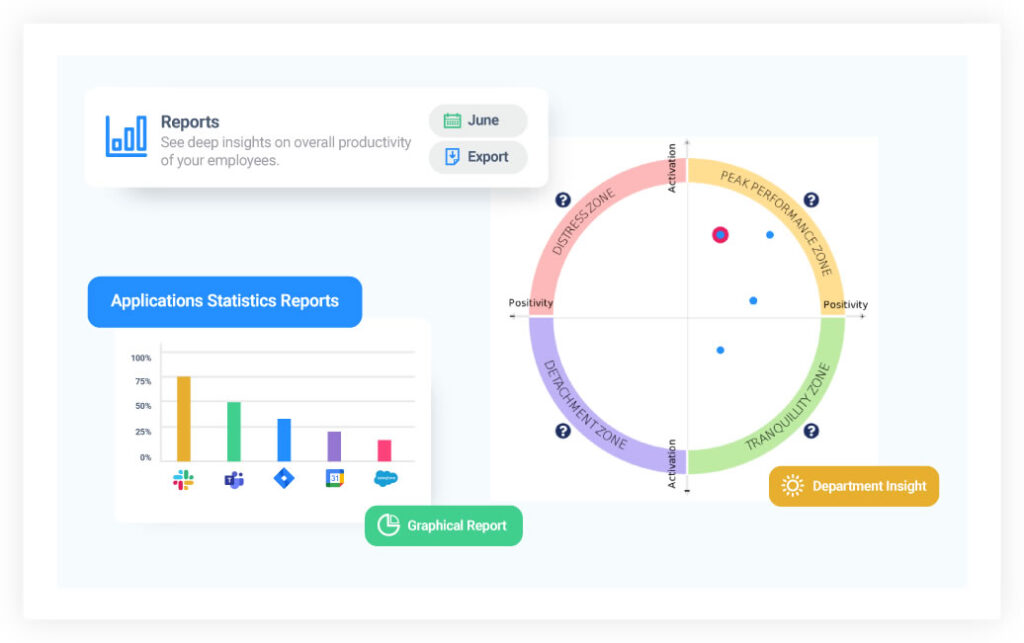
Learn about the circumplex model that we apply at Leanmote and why we use it.
Why does mood matter?
Moods are a “conscious state of mind or predominant emotion”. While emotions may last as little as a few seconds, moods represent the form of emotional experience that can last for several hours, for good or ill. Closely related to an individual’s wellbeing, moods can impact the ways people think and feel, how they interpret their environment, and ultimately how they act. As a form of emotional wellbeing, moods have the potential to take a toll on a person’s psychological and even physical health if they are not dealt with adequately.
Studies have also shown that mood states are relevant to the workplace. For example, when people feel exhausted, they often make riskier decisions (due to a tendency to minimise information processing, ‘cutting corners’ to preserve their cognitive resources). On the flip side, when people feel energised, they are more likely to help other people. When people feel angry or frustrated, they are more likely to engage in conflict or even aggression. When people are anxious they tend to be very risk-averse. Yet employees who feel enthusiastic tend to show greater initiative-taking and more proactivity (e.g. suggesting process improvements or trying to prevent problems). Moods, therefore, have the potential to influence a wide range of performance-relevant behaviours.
Moods are also contagious. Someone who is enthusiastic can infuse others in their team with their eagerness and engagement in a project. Yet someone who is cynical or anxious could have the same effect. This means that a single person’s mood has the potential to influence not only their own productivity but also the productivity of people around them.
So it seems that moods can have a big impact on a workplace, which is why Leanmote provides tools that quickly assess moods and track them over time.
Circumplex Model of Mood
Given the variety of moods and the complexity of their effects, measurement of mood has the potential to be complicated, but it need not be. Circumplex models of mood provide a framework to understand most aspects of emotional experience in terms of two fundamental mood dimensions: Tempo and Positivity.
Many people think about moods in terms of a simple dimension going from bad to good. Some moods feel very good (e.g., delight, joy), while others feel very bad (e.g., anger, disappointment). This aspect of emotional experience is represented by a position along our horizontal dimension, Positivity. Better moods lie towards the positive end, while worse moods lie towards the negative end.
Many moods lie between the extremes of bad and good. And even looking at one end of the Positivity scale, two positive moods can be quite different in how they influence thoughts and behaviours. For example, most would agree that enthusiasm is a very different emotional experience to contentment. From this, it should be clear that a single dimension is not enough for understanding moods.
Our vertical dimension, Tempo, can be understood as the extent to which a person feels energized, ‘switched-on`, and ‘amped up’. Moods high in these activated emotional states are associated with higher levels of adrenaline. Someone scoring high in Tempo may be productively energetic, excited, or enthusiastic. Yet we should remember that moods such as anxiety and anger are also high in Tempo. Similarly, someone low in Tempo may feel detached, depressed, or drained, and yet contentment and tranquillity are also low in Tempo.
In short, to understand and be able to make useful predictions from mood (in terms of health and productivity), it is important to combine these two dimensions. We use a model that represents, in two-dimensional space, a wide variety of different emotional experiences. For example, the mood of excitement includes the features of high positivity as well as high tempo, whereas depression can be characterised as being low in both positivity and tempo.
The ability for people to track their moods across the two dimensions allows insight into patterns of emotional wellbeing. With this understanding, more power is given to the individual to monitor and influence their own mood.
Mood Zones
By measuring mood within a circumplex model, Leanmote can categorise the great variety of discrete emotional experiences into four quadrants or zones, each capturing a set of similar moods that have been seen to have a similar set of causes and consequences.
High Tempo, Low Positivity: The Distress Zone
- This zone is characterised by moods in which tempo is high but positivity is low, such as fear, anxiety, anger, and frustration.
- These moods can be triggered by high work pressures, by a lack of time or other resources, by suboptimal team experiences, or by other problems.
- Employees in this zone tend to be highly alert (especially to risks) and can be highly productive for short periods, but they are more likely to make mistakes, they usually feel stressed, and the longer they spend in this zone the higher is their risk of burnout.
High Tempo, High Positivity: The Peak Performance Zone
- This zone is characterised by moods in which tempo and positivity are both high, such as excitement, enthusiasm, eagerness, and enjoyment.
- These moods can be triggered by the presence of good teamwork and other effective work resources, and/or by opportunities to learn and engage in tasks that are interesting and which make employees feel valuable.
- Employees in this zone tend to be highly engaged with their work and absorbed in their tasks, and so they can display high levels of productivity and innovation. Nevertheless, prolonged periods in this zone can also be draining unless good self-care practices are utilised.
Low Tempo, Low Positivity: The Detachment Zone
- This zone is characterised by moods in which tempo and positivity are both low, such as exhaustion, depression, disappointment, and discouragement.
- These moods can be triggered by a lack of effective work resources, by a lack of recognition for effortful contributions, by problematic team climates, or simply as a result of having been placed under too much pressure for too long.
- Employees in this zone tend to withdraw from their co-workers, their clients, or even their responsibilities; they may be dealing with early stages of burnout and if they remain in this zone for long their burnout may worsen.
Tranquillity Zone
- This zone is characterised by moods in which tempo is low, but positivity is high, such as satisfaction, contentment, and calmness.
- These moods can be triggered by the presence of effective work resources combined with sustainable workloads, along with a lack of apparent risks or problems in the near future.
Employees in this zone tend to be more tolerant of obstacles, more likely to cooperate, and more willing to try new things.
How does mood-tracking help me?
People who regularly identify and track their moods become more aware of those moods. High mood awareness is an important aspect of emotional intelligence. For example, and studies have shown several benefits associated with mood awareness:
- People who are more aware of their moods are better at recognising factors that impact their moods (causes and triggers), and also better at understanding the consequences of moods on their behaviours.
- People who are more aware of their own moods have greater opportunity and capacity to manage their moods, rather than letting their moods determine their experiences. For example, people with more mood awareness are less likely to take their frustrations out on others.
- People who are more aware of their moods can learn to utilise their moods to their benefit. For example, they may be able to maximise their efficiency by focusing on tasks that are enhanced by their current mood.
Ultimately, tracking your mood provides an opportunity for improved awareness of one’s emotional experiences, and further reflection can bring about meaningful insights into how to manage one’s situation to suit one’s mood, or how to manage one’s mood to suit one’s situation. Leanmote provides tools to support this insight into personal wellbeing and capability.
Mood and management
As managers develop an understanding of their overall team’s wellbeing and mood, they too are able to reach a level of emotional intelligence and awareness that aids their wellbeing and productivity. They can become more aware of how their own moods might be influencing their teams, which may not always have been ideal, and they can reflect on ways they can manage their moods more effectively.
But Leanmote’s tools also allow managers insights into the moods of their team members. In an increasingly virtual world of work, insights into team members moods and wellbeing can be difficult to obtain. Having the opportunity to observe team members moods helps managers to recognise when employees require assistance. Our tools can help managers work with employees to formulate solutions that support wellness and facilitate productivity. The process contributes not only to team support but also to ongoing leadership development.
Bibliography
Avramova, Y. , Stapel, D. , Lerouge, D. & (2010). Mood and Context-Dependence. Journal of Personality and Social Psychology, 99 (2), 203-214. doi: 10.1037/a0020216.
Hockey, G. R. J., John Maule, A., Clough, P. J., & Bdzola, L. “Effects of Negative Mood States on Risk in Everyday Decision Making.” Cognition and Emotion, vol. 14, (2000) pp. 823–55,
Merriam-Webster. (n.d.). Mood. In Merriam-Webster.com dictionary. Retrieved September 12, 2021, from https://www.merriam-webster.com/dictionary/mood
Peter Warr , Uta K. Bindl , Sharon K. Parker & Ilke Inceoglu (2014) Four-quadrant investigation of job-related affects and behaviours, European Journal of Work and Organizational Psychology, 23:3, 342-363, DOI: 10.1080/1359432X.2012.744449
Rivera-Pelayo, V., Fessl, A., Müller, L., & Pammer, V., Introducing Mood Self-Tracking at Work: Empirical Insights from Call Centers., 24(1), 1–28. edn ([n.p.]: ACM Transactions on Computer-Human Interaction, 2017).
Stewart-Brown, S. (1998). Emotional wellbeing and its relation to health. BMJ, 317(7173), 1608–1609. https://doi.org/10.1136/bmj.317.7173.1608
How Leanmote can help you tick the box on United Nations’ Goal 3
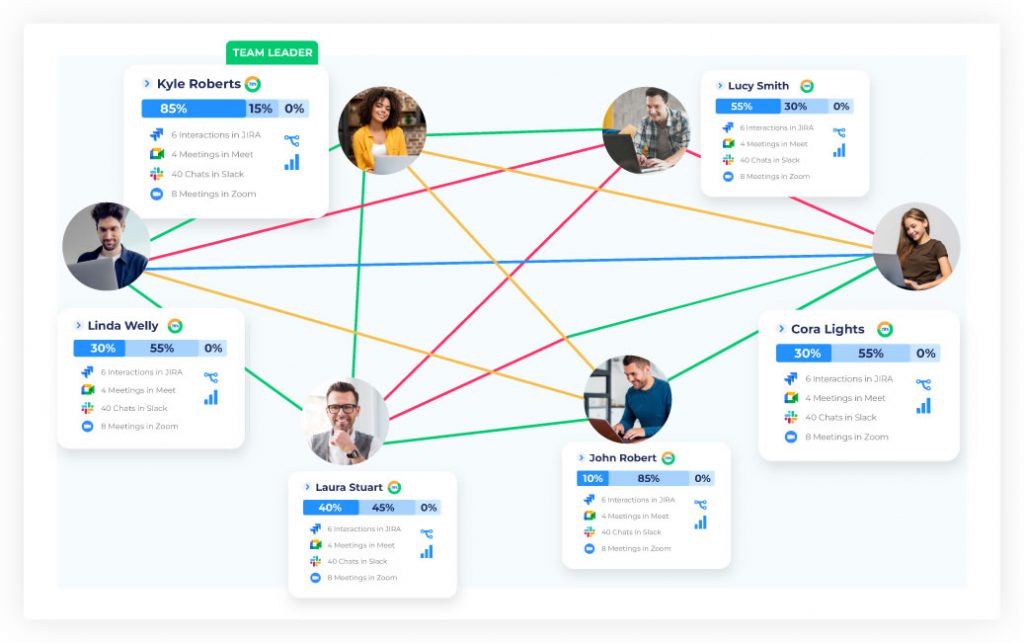
An employee-first platform powered by a human-centred design
At Leanmote, we believe all efforts towards increasing well-being at work should start at the employee level: a team won’t be at its best until all its members are. After all, employees who are self-aware can leverage their strengths, work on their weaknesses, and better define their career path. That’s why our platform is designed on an employee-first basis. We focus on preserving mental health, preventing stress peaks, and enhancing performance at a company-wide level—but we do so in a way that is useful for employees, managers, and HR teams alike.
Well-being is at the heart of what we do. The fact that the United Nations has devoted one of its Sustainable Development Goals to this cause reinforces the importance of securing employee’s mental health. At the same time, it proves that there’s still a lot that companies can do in terms of increasing well-being at work.
In this article, we analyse the United Nations’ Sustainable Development Goal 3, its importance, and how our platform can help companies work towards this objective.
What is the United Nations’ Sustainable Development Goal 3?
The Sustainable Development Goals (SDGs), also known as Global Goals, are a series of 17 goals established by the United Nations in 2015. These goals represent “a blueprint to achieve a better and more sustainable future for all”, and are intended to be met by the year 2030.
The third Global Goal, regarding “Good Health and Well-being”, aims to “ensure healthy lives and promote well-being for all at all ages.“ This SDG has 13 targets and 28 indicators to track the progress towards achieving the main goal. Some of these targets include providing universal health coverage, strengthening the prevention and treatment of substance abuse, and ensuring universal access to reproductive healthcare services.
Why are the United Nations’ Sustainable Development Goals (SDG) important for your business?
Many companies are aligning their OKRs with the Sustainable Development Goals so as to make their business goals match their peoples’ development goals. SDGs constitute a universal “golden standard” for building the company of the future; a role model known by a variety of stakeholders at a global level that helps identify and prevent risks.
At the same time, these goals are the perfect starting point for building innovative solutions. This is especially relevant in the current scenario, where the pandemic has led many businesses to reinvent themselves and find new ways to grow on a remote, in-person, or hybrid work basis.
SDGs answer employees’ everyday pain points and challenges, and many workers identify with the values these goals promote. A company that is aligned with SDGs is a company that embodies the right values, and a company people will want to be a part of.
How is Leanmote related to SDG 3?
At Leanmote, we focus on encouraging honest conversations, generating ongoing feedback, tracking stress levels, and detecting burnout symptoms early on. All these efforts combine to nurture your team’s well-being. SDG 3 states that “promoting well-being is important to building prosperous societies”. We believe starting by changing how we work and how we interact with our co-workers is key.
Our platform is designed to provide the necessary tools for companies to track, monitor, and understand well-being both at the employee and at the team level—as well as how to leverage this data to make meaningful decisions that boost employee performance.
We provide a unique integration between science and technology with a human-centred design. Don’t just take our word for it: we have an in-house team of experts in organisational psychology and well-being with 100+ years of combined experience who support us with our market research efforts and the implementation of evidence-based tools.
How our platform helps you track and monitor employee well-being
#1 Mood & well-being assessment
Our mood assessment feature works for all the different roles within a company: employees get to self-monitor their well-being evolution over time, managers see whether their assessment of employees’ mood is accurate, and HR leaders can analyze whether there are any mismatches between the data reported by employees and managers.

#2 Stress monitoring
Our stress monitoring tool can detect whether your team is working at its peak performance or not, which allows managers to take the necessary actions to prevent employee burnout.

#3 Team 1:1s
Our one-on-one meetings help employees connect with their managers and co-workers. Our platform allows you to set discussion topics as well as short and long-term goals in advance to keep syncs organized.
#4 Goal tracking
Employees need to be recognized for their hard work, so it’s key to keep a record of their achievements. Our goal tracking feature allows employees to add goals to each one-on-one meeting. Goals that have a direct impact on a person’s career path can be moved to the Achievements section. Employees can later leverage this section to apply for a promotion or provide proof of past success.
#5 Comprehensive results
Our data dashboards and heatmaps help record and compare constructive feedback to keep your team aligned at all times. We help you easily understand how each team and individual is performing, what their challenges are, and how to better overcome them.
Try Leanmote today!
Try our employee-first, human-centred platform to boost your team’s well-being and performance. Sign up today to start testing our platform for free.




